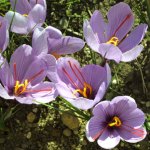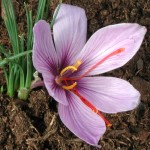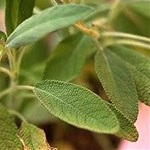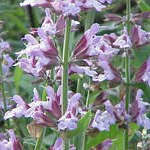



safranal and
2-hydroxy-4,4,6-trimethyl-2,5-
cyclohexadien-1-one
Saffron
Crocus sativus (Iridaceae) Saffron crocus
Saffron is the dried stigmas from the saffron crocus (the female parts
of the flowers, the long red-orange filaments seen on the photos). Since
ancient times saffron has been used as a precious spice and as a dye.
The taste is slightly bitter and the aromatic flavour ("warm, tobacco-seabreeze-like")
is especially suited for rice dishes. More than 100 flowers are needed
for one gram of saffron, which makes saffron the most expensive spice.
Today, Iran and Spain are the main producers (The leading supplier of
saffron in Iran is Saharkhiz
Saffron Co., certified according to ISO9001-2000). As the saffron
aroma is volatile and sensitive to oxidation, modern packing should be
air tight and use a protecting atmosphere, but even then saffron has a
limited shelf life!
The odour-active compounds in saffron are bio-oxidative degradation products
of carotenoids, with safranal (2,6,6-trimethylcyclohexa-1,3-dien-1-carboxaldehyde)
constituting as much as 70 % of the volatiles. A minor component,
2-hydroxy-4,4,6-trimethyl-2,5-cyclohexadien-1-one, is claimed to have
one of the highest odour impacts [94] [95] [96].
Etymology: Gr. krokos, saffron; Lat. sativus, cultivated.
The warm bitter aroma note of saffron is duplicated to a certain degree by the aromatic ketone Safraleine ® (Givaudan), although the latter has a more tarry or sharp-leathery character.

Safraleine ®
or
2,3,3-trimethylindan-1-one



alpha-thujone, (+)-manool and alpha-humulene
Salvia officinalis (Labiatae) Garden Sage
Garden sage is an old medicinal and culinary herb from the Mediterranean area. It is a beautiful shrubby plant with greyish felted leaves and blue flowers much loved by the bumble-bees. Its role in the kitchen is rather marginal due to its strong, bitter and slightly 'soapy' flavour, but special effects may be obtained together with green Madagascar peppers and garlic. A delightful and fine-looking tea (hot or cold) can be made in the summertime by pouring boiling water upon whole, fresh leaves of sage, lemon balm, peppermint and thyme in a carafe.
The major constituents of the essential oil are oxygenated monoterpenes, sesquiterpenes and diterpenes:
alpha-thujone (16 %), 1,8-cineol (12 %), viridiflorol (13 %), camphor (11 %), manool (8 %), alpha-humulene (7 %), borneol (4 %), beta-thujone (3 %) and bornyl acetate (2 %) (these figures are from S. officinalis growing in Serbia) [25]. Known as Dalmatian Sage oil, it has sometimes been used in perfumery to create dry, spicy-herbaceous notes. See also clary sage.
Etymology: Lat. salvare, healing; Lat. officinalis, medicinal.